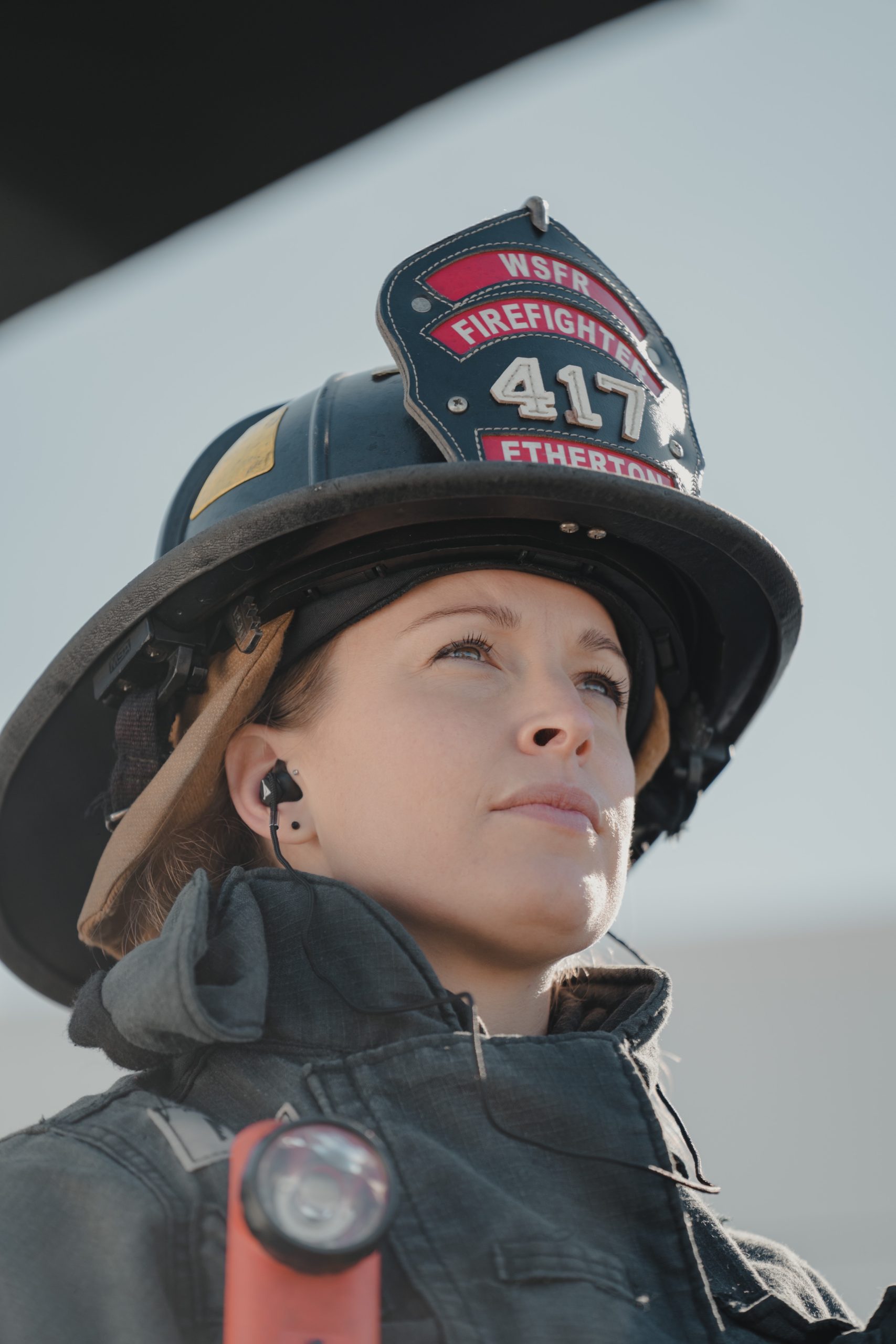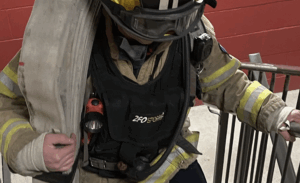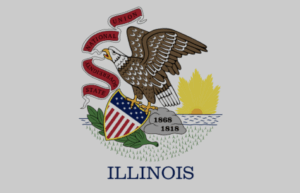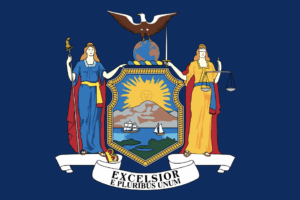Breaking Barriers and Forging a Path
Men have historically dominated the world of firefighting. The brave firefighters who battle blazes and rush into danger have often been portrayed as masculine figures. But what about the women who have always been there, defying stereotypes and risking their lives to save others? This article delves into the fascinating history of women in the fire service, tracing their journey from early pioneers to today’s trailblazers. If you’re interested in a firefighting career read Career Firefighter: Is it for You?
Learn How To Become A Career Firefighter And Earn $100K A Year
A must read for women interested in becoming firefighters

Mastering the Firefighter Exam is a complete guide on how to pass the firefighter exam with a top score. It simplifies the complicated hiring practices of big city fire departments and reveals insider information most candidates don’t know about.
If You Would Like To Know How To Get Ahead of Your Competition, This Book Is For You.
Early Firefighting Roots
Before we explore the achievements of women in modern firefighting, let’s step back in time to understand the early roots of this profession. Firefighting has a long history, dating back to ancient civilizations such as the Romans and Greeks. In these societies, men often held the role of firefighters, primarily focusing on extinguishing fires that threatened their cities. This historical context sets the stage for women’s challenges when entering the field.
The First Female Firefighter
The concept of women serving as firefighters professionally was nearly unthinkable in the past. However, history introduces us to Molly Williams, a pioneering figure who broke this barrier. Molly Williams, an African American, is widely regarded as the first recorded female firefighter in the United States. Her story unfolds in early 19th-century New York City.
Molly worked as a cook for Oceanus Engine Company No. 11 in Manhattan, responsible for fighting fires. The story goes that when the company’s firefighters fell ill during a severe fire, Molly stepped in to help. She bravely took her place among the ranks of male firefighters and showed great courage in her firefighting efforts. Molly Williams’ contribution to the world of firefighting was revolutionary, especially considering the time she lived.
The Emergence of Women's Auxiliaries
While the actions of Molly Williams were groundbreaking, they did not immediately open the floodgates for women in firefighting. However, the late 19th and early 20th centuries saw the emergence of women’s auxiliaries associated with fire departments. These auxiliaries, often composed of firefighters’ wives, played crucial support roles, assisting with various firefighting activities.
While not front-line firefighters, these women provided essential services, such as preparing meals, caring for the injured, and raising funds for fire departments. Although their roles were primarily supportive, they fostered a sense of community and camaraderie within the fire service.
The World War II Influence
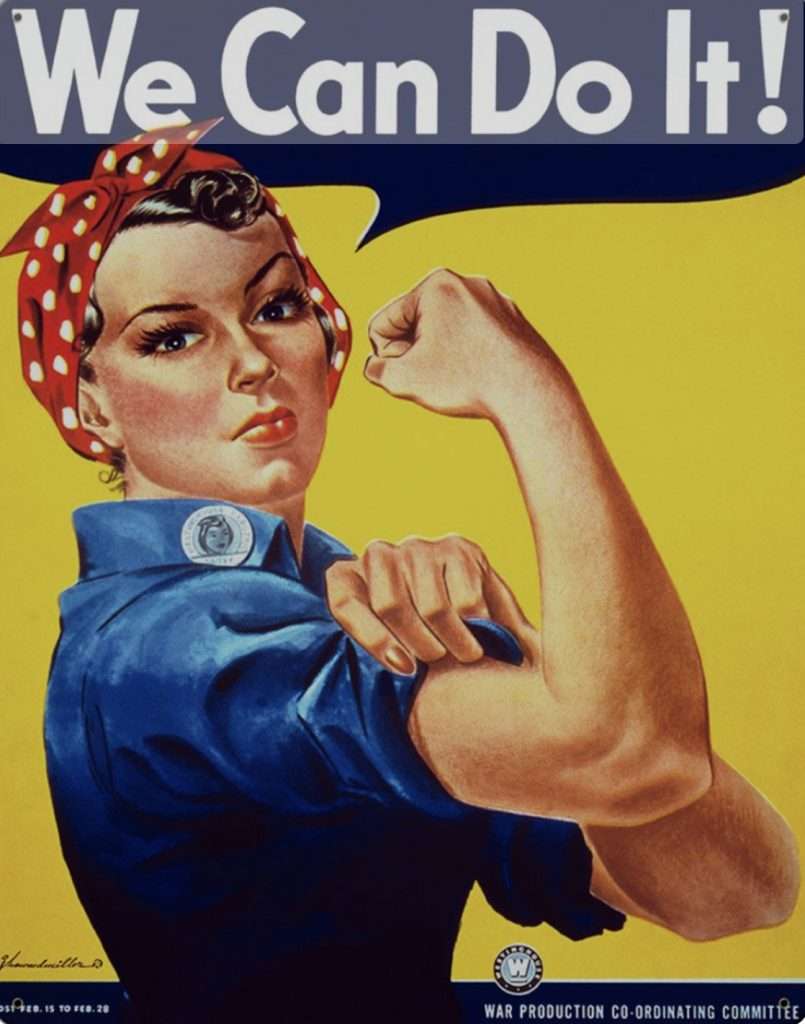
The role of women in the fire service took an essential turn during World War II. As men went off to fight in the war, women stepped in to fill various roles, including firefighting. The Women’s Army Corps (WAC), Civilian Defense Volunteers, and other organizations began training women as auxiliary firefighters. Women served as air-raid wardens and firefighting instructors, proving they could perform their duties with skill and bravery.
World War II played a significant role in demonstrating the capabilities of women in traditionally male-dominated professions. While many women returned to their civilian roles after the war, these experiences planted the seeds for future female firefighters.
The First Paid Female Firefighter
In the years following World War II, progress was made in integrating women into fire departments. In 1973, Brenda Berkman became the first paid female firefighter in the New York City Fire Department (FDNY). Berkman, a lawyer, joined a landmark lawsuit against the FDNY, advocating for equal opportunities for women in firefighting. Her victory in the lawsuit not only broke gender barriers but also opened the doors for women to pursue careers in fire services across the United States.
Expanding Opportunities
The late 20th century marked a turning point in women’s history in the fire service. Throughout the 1970s, ’80s, and ’90s, more and more fire departments began hiring women as full-time, paid firefighters. The inclusion of women in the profession brought about changes in training, facilities, equipment, and culture within the fire service.
As the number of female firefighters grew, so did the various roles and positions they could occupy. Women worked as firefighters, paramedics, officers, and fire inspectors. They were no longer limited to serving in support roles or auxiliary units but were actively participating in all aspects of firefighting.
Challenges and Triumphs
While women’s progress in the fire service was commendable, it came with challenges. Gender discrimination, lack of facilities designed for female firefighters, and cultural resistance remained barriers that women in the fire service had to overcome.
These challenges were met with determination and resilience. Women in the fire service created support networks and advocacy groups to address issues like workplace harassment and lack of representation. These efforts led to improved conditions and cultural shifts within fire departments.
If you want to learn how EEO and AA work in the fire department hiring process, read Equal Employment Opportunity and Affirmative Action in the Fire Department Hiring Process.
Beyond Borders
The advancement of women in the fire service was not confined to the United States. Across the globe, women were making strides in firefighting. Female firefighters were proving their worth and breaking stereotypes from Australia to Europe and beyond.
One remarkable example is Trude Pettersen, a Norwegian firefighter who became the world’s first female fire chief in 1993. Her achievements inspired women worldwide, demonstrating that leadership roles in the fire service were within reach for women.
The Pioneers of Today

Today, female firefighters are an integral part of the fire service and pioneers who continue to challenge norms and inspire future generations. These modern pioneers demonstrate that firefighting is not limited by gender, and anyone with commitment and dedication can make a difference in the profession.
Leadership Roles:
Many women have ascended to leadership roles within their fire departments. Fire chiefs, captains, and lieutenants—these titles no longer have gender restrictions. Female leaders in the fire service are fighting fires and breaking glass ceilings.
Mentorship and Advocacy:
Female firefighters understand the importance of mentorship and advocacy. They actively engage in programs and initiatives encouraging young girls and women to consider firefighting a career. Through mentorship, they guide and inspire those aspiring to join the fire service ranks.
Cultural Change:
The inclusion of women has led to positive cultural changes within the fire service. Fire departments have adapted by providing gender-neutral facilities, improving protective gear and equipment design, and implementing anti-discrimination policies. The camaraderie among firefighters has grown stronger, emphasizing unity and teamwork, regardless of gender.
Recognition and Awards:
Many female firefighters have received recognition for their exceptional service. From bravery awards to firefighter of the year accolades, their contributions have not gone unnoticed. These accolades serve as testaments to their dedication and professionalism.
Championing Safety and Inclusivity:
Female firefighters have played a crucial role in supporting safety and inclusivity. Their input has led to changes in firefighting techniques and strategies to accommodate diverse strengths and abilities. They’ve also emphasized the importance of mental health support, recognizing that firefighters face unique challenges in their line of duty.
Community Connection:
Women in the fire service are known for their strong connections to their communities. They actively engage in community outreach, safety education, and support services. This involvement builds trust and encourages community members to view firefighters as approachable and relatable figures.
Multifaceted Skill Sets:
Female firefighters bring diverse skills to the profession. From medical expertise to technical proficiency, their multifaceted skill sets enrich the capabilities of fire departments. These varied skills contribute to the broader mission of firefighting, extending beyond traditional fire suppression.
Uniting for a Common Cause:
Women in the fire service remind us that firefighting is a vocation driven by a shared commitment to protecting lives and property. It doesn’t matter whether a firefighter is a man or a woman in the heat of a fire. What matters is their courage, training, and determination to serve the greater good.
Women’s history in the fire service is one of resilience, tenacity, and progress. From the courageous acts of Molly Williams to the trailblazing efforts of Brenda Berkman and the countless female firefighters of today, women have consistently shown that firefighting knows no gender. The legacy of these pioneers and their ongoing contributions remind us that diversity within the fire service is not just an ideal; it’s a reality that benefits us all.
The International Association of Women in Fire and Emergency Services
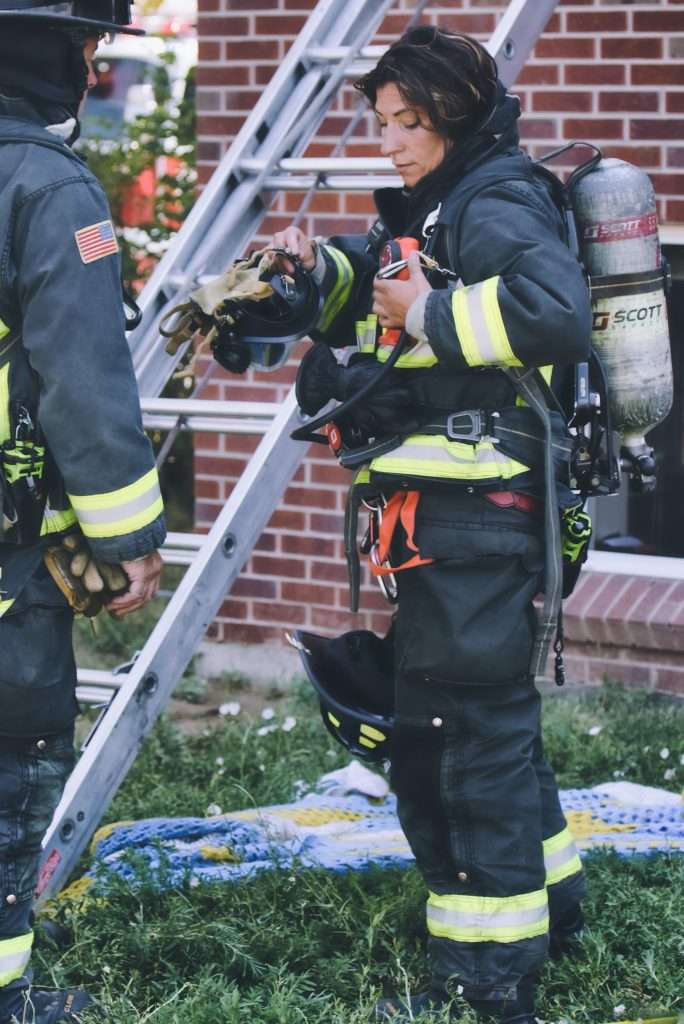
In the dynamic world of firefighting and emergency services, where courage and resilience are paramount, women have increasingly risen to the challenge. The sight of women in uniform, battling blazes, rescuing lives, and responding to crises, has become increasingly common. Behind this change lies a collective force, a dedicated organization that has been a guiding light for women in the fire service. The International Association of Women in Fire and Emergency Services (iWomen) is a beacon of empowerment and support, transforming the landscape for women in the field.
A Network for Change
iWomen, a nonprofit organization, was established to address women’s unique needs, concerns, and aspirations in fire and emergency services. With a rich history dating back to the 1980s, the organization has played an instrumental role in breaking down gender barriers and promoting diversity within the industry. Its impact can be felt through its education, support, and advocacy pillars.
1. Education and Professional Development
Education is a cornerstone of iWomen’s mission. The organization offers a wide range of educational programs and resources, providing women in the fire service with the tools they need to excel in their careers. These resources are tailored to meet the unique challenges that female firefighters face, including gender-specific safety concerns, gear and equipment issues, and workplace dynamics.
Workshops, seminars, and conferences hosted by iWomen are essential forums for sharing knowledge and experiences. These events provide a platform for female firefighters to learn from each other, stay updated on the latest industry developments, and gain vital skills. Learning from experienced peers and mentors, female firefighters are empowered to navigate their career paths more effectively.
2. Support and Mentorship
The journey of a female firefighter can be both demanding and rewarding. iWomen recognizes the importance of support networks and mentorship in helping women achieve their goals. Through the organization’s initiatives, new recruits and experienced firefighters alike can connect with mentors who provide guidance, encouragement, and advice.
Mentorship can have a profound impact on career development. Young firefighters receive practical guidance on advancing within the fire service, such as exam preparation and career planning. Moreover, mentors offer emotional support, helping female firefighters face and overcome the unique challenges that can arise in a male-dominated field. This support network fosters a sense of camaraderie and unity among women in fire and emergency services.
3. Advocacy and Empowerment
iWomen is a formidable advocate for gender equality and inclusivity within the industry. The organization works tirelessly to promote the interests and rights of women in fire and emergency services. It lobbies for gender-responsive policies and procedures in departments nationwide and highlights the importance of gender diversity in firefighting.
Moreover, iWomen offers a powerful voice in response to harassment, discrimination, or challenges within the workplace. By providing support and advocacy, the organization ensures that female firefighters have the resources to address unfair treatment or gender-based bias.
If you want more details about the fire department hiring process, read The Fire Department Hiring Process: Unlocking Opportunities.
Uniting for Progress
iWomen’s dedication to its education, support, and advocacy mission has been transformative. Female firefighters across the United States have found inspiration, mentorship, and empowerment through this organization. The doors of opportunity have been flung wide open for women in fire and emergency services, providing a platform for their success and a voice in the broader conversation of gender equality in the workplace.
With its unwavering commitment to progress, the International Association of Women in Fire and Emergency Services is setting an example for other organizations and industries. As women continue to rise and excel in firefighting and emergency services, iWomen’s legacy of support and empowerment ensures that the future is brighter and more inclusive for all who seek to serve their communities in this noble profession.
As the fire service continues to evolve, the tireless dedication of women firefighters remains a source of inspiration. They are symbols of equality and opportunity, proving courage has no gender. The historical perspective of women in the fire service is a testament to the power of determination and the unyielding spirit of those who put their lives on the line to protect others. Their stories serve as beacons, lighting the way for future generations of firefighters, regardless of gender, who will carry the torch of service forward.
Learn How You Can Become A Firefighter

Mastering the Firefighter Exam is a complete guide on how to pass the firefighter exam with a top score. It simplifies the complicated hiring practices of big city fire departments and reveals insider information most candidates don’t know about.
If You Would Like To Know How To Get A Head Of Your Competition, This Book Is For You.

